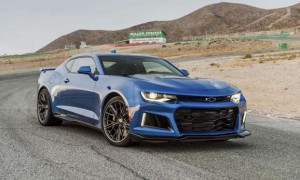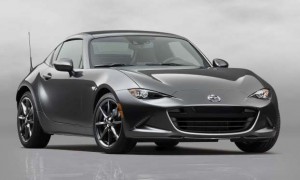Change is inevitable. Sometimes it is welcome. Sometimes not. In November 2011, scioto.com published a list of 10 things likely to disappear from our lives. The list has been making the rounds on the internet ever since.
The article may be correct on some or all points, but there is good reason to doubt some of the predictions. Our take on why some of the allegations are questionable appears in brackets after the original item’s explanation.
1. The U.S. Post Office
Get ready to imagine a world without the post office. They are so deeply in financial trouble that there is probably no way to sustain it long term. Email, Fed Ex and UPS have just about wiped out the minimum revenue needed to keep the post office alive. Most of your mail every day is junk mail and bills.
[It remains entirely possible that the Congress may wake up some day and allow the postal service to operate like a business, rather than like a child with an allowance from Congress. There remain many folks who for reasons of location, disability, age or other things, can’t rely on electronic media to deliver to them what they currently receive in the mail. While the demise of the post office remains possible, it’s just as likely it will undergo changes that will allow operations to continue.]
2. The Check
Britain is already laying the groundwork to do away with check by 2018. It costs the financial system billions of dollars a year to process checks. Plastic cards and online transactions will lead to the eventual demise of the check. This plays right into the death of the post office. If you never paid your bills by mail and never received them by mail, the post office would absolutely go out of business.
[Once again, the article flails at the post office. Checks may well disappear, but for those who must use mail to make payments, money orders can replace the check.]
3. The Newspaper
The younger generation simply doesn’t read the newspaper. They certainly don’t subscribe to a daily delivered print edition. That may go the way of the milkman and the laundry man. As for reading the paper online, get ready to pay for it. The rise in mobile Internet devices and e-readers has caused all the newspaper and magazine publishers to form an alliance. They have met with Apple, Amazon, and the major cell phone companies to develop a model for paid subscription services.
[It’s a bit of an exaggeration to say the younger generation doesn’t read the newspaper, though they may be less faithful at doing so than their elders. And even this article notes that the newspaper may disappear in printed form, but not electronically. The “Oracle of Omaha,” Warren Buffett, has sunk many millions into purchasing newspapers in recent years. One of the world’s richest people, Buffett doesn’t normally make huge mistakes when it comes to money. His faith in the newspaper business surely does not indicate that the death of newspapers is imminent.]
4. The Book
You say you will never give up the physical book that you hold in your hand and turn the literal pages. I said the same thing about downloading music from iTunes. I wanted my hard copy CD. But I quickly changed my mind when I discovered that I could get albums for half the price without ever leaving home to get the latest music. The same thing will happen with books. You can browse a bookstore online and even read a preview chapter before you buy. And the price is less than half that of a real book. And think of the convenience! Once you start flicking your fingers on the screen instead of the book, you find that you are lost in the story, can’t wait to see what happens next, and you forget that you’re holding a gadget instead of a book.
[Maybe, but a good many readers have shut off their Kindles and gone back to flipping printed pages to get the true satisfaction of reading a book. “Fahrenheit 451″ didn’t get rid of all the books, and neither did the dark ages in Europe, when Irish monks took it upon themselves to save and make copies of every written thing they could get their hands on.]
5. The Land Line Telephone
Unless you have a large family and make a lot of local calls, you don’t need it anymore. Most people keep it simply because they’ve always had it. But you are paying double charges for that extra service. All the cell phone companies will let you call customers using the same cell provider for no charge against your minutes.
[Land lines certainly are on the decline and may cease to exist. But they are vastly less expensive than cell phone services and there are certain situations when only a land line will do. For example, inmates on furlough from the Nebraska corrections system must stay only at a home with a land line so that the corrections department can phone them via that land line to ensure that they are where they are supposed to be.]
6. Music
This is one of the saddest parts of the change story. The music industry is dying a slow death. Not just because of illegal downloading. It’s the lack of innovative new music being given a chance to get to the people who would like to hear it. Greed and corruption is the problem. The record labels and the radio conglomerates are simply self-destructing. Over 40% of the music purchased today is “catalogue items,” meaning traditional music that the public is familiar with. Older established artists. This is also true on the live concert circuit. To explore this fascinating and disturbing topic further, check out the book, “Appetite for Self-Destruction” by Steve Knopper, and the video documentary, “Before the Music Dies.”
[We don’t have enough knowledge of this industry to dispute the article. But new and innovative music remains available for purchase on-line and new groups continue to pop up and thrive.]
7. Television Revenues
The networks are down dramatically. Not just because of the economy. People are watching TV and movies streamed from their computers. And they’re playing games and doing lots of other things that take up the time that used to be spent watching TV. Prime time shows have degenerated down to lower than the lowest common denominator. Cable rates are skyrocketing and commercials run about every 4 minutes and 30 seconds. I say good riddance to most of it. It’s time for the cable companies to be put out of our misery. Let the people choose what they want to watch online and through Netflix.
[Cable and network TV may be the big losers here. Netflix, Hulu, Amazon and the like are thriving and seem destined to dominate what’s watched on TV.]
8. The “Things” That You Own
Many of the very possessions that we used to own are still in our lives, but we may not actually own them in the future. They may simply reside in “the cloud.” Today your computer has a hard drive and you store your pictures, music, movies and documents. Your software is on a CD or DVD, and you can always re-install it if need be. But all of that is changing. Apple, Microsoft and Google are all finishing up their latest “cloud services.” That means that when you turn on a computer, the Internet will be built into the operating system. So, Windows, Google and the Mac OS will be tied straight into the Internet. If you click an icon, it will open something in the Internet cloud. If you save something, it will be saved to the cloud. And you may pay a monthly subscription fee to the cloud provider. In this virtual world, you can access your music or your books, or your whatever from any laptop or handheld device. That’s the good news. But, will you actually own any of this “stuff” or will it all be able to disappear at any moment in a big “Poof?” Will most of the things in our lives be disposable and whimsical? It makes you want to run to the closet and pull out that photo album, grab a book from the shelf or open up a CD case and pull out the insert.
[It’s a bit of a stretch to label electronic files as the “things” we all own. Today, six years after publication of this article, there is indeed a great deal of our data etc. in the cloud. But computers with huge memories are popular and likely to remain so.]
9. Joined Handwriting (Cursive Writing)
Already gone in some schools who no longer teach “joined handwriting” because nearly everything is done now on computers or keyboards of some type (pun not intended).
[And already many of those schools are bringing cursive back. The invention of the printing press did not kill handwriting and it seems unlikely that today’s electronics are about to deliver the fatal blow. We still want to be able to read those old family Bibles and tales and the letters grandfather sent home from the battlefield.]
10. Privacy
If there ever was a concept that we can look back on nostalgically, it would be privacy. That’s gone. It’s been gone for a long time anyway. There are cameras on the street, in most of the buildings and even built into your computer and cell phone. But you can be sure that 24/7, “They” know who you are and where you are, right down to the GPS coordinates, and the Google Street View. If you buy something, your habit is put into a zillion profiles, and your ads will change to reflect those habits. “They” will try to get you to buy something else. Again and again.
[This one seems spot on. And it grows ever worse in the interests of “national security” or just plain “security” as with the new rules mandating that anything going into Memorial Stadium in Lincoln must be contained in clear plastic so it can be seen on entry.]




